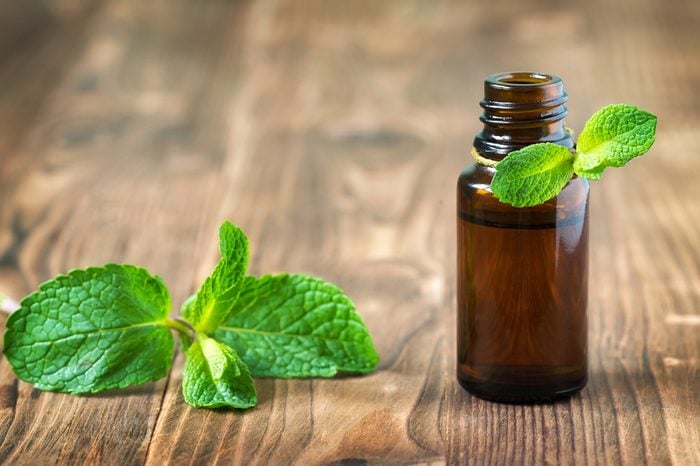
Peppermint Essential Oil
This delectable essential oil doubles as a bug bite soother and prevention spray. Arwen Bardsley, a wellbeing practitioner and founder of Evenstar Wellbeing in Victoria, Australia, suggests using it whenever you think you might be exposed to bugs, or in areas of your home where you think there might be an infestation. “Place a few drops where you see critters coming in and it will stop them in their tracks,” she says. “When you’re out and about, apply the oil topically on any exposed skin, diluting with a carrier oil such as coconut or sweet almond, or just the good old moisturizer sorbolene.”
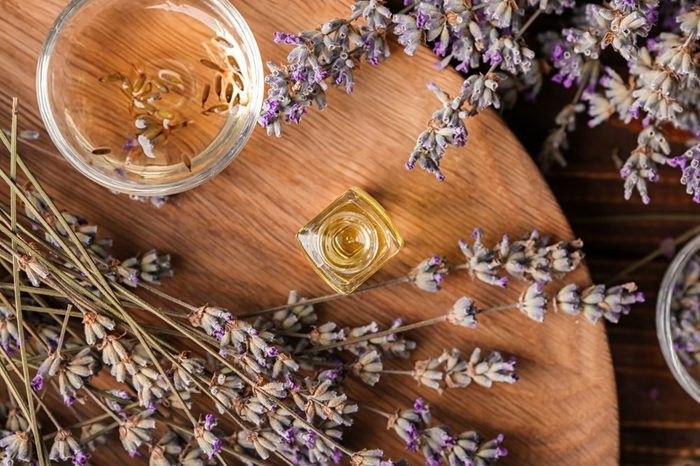
Lavender Essential Oil
If you’ve ever smelt lavender before in a hand cream or a fragrance, you know how soothing it can be. That’s why lavender essential oil makes a great bug-bite remedy. “Renowned for its relaxing fragrance and ability to soothe inflammatory skin conditions including minor burns, wounds, and acne, lavender essential oil can help reduce itching and inflammation within minutes of application,” says Melanie St. Ours, clinical herbalist and author of The Simple Guide to Natural Health. She suggests choosing a brand that’s made of 100 percent French lavender grown at high altitudes. Apply one to two drops directly to the affected area. Re-apply as needed.
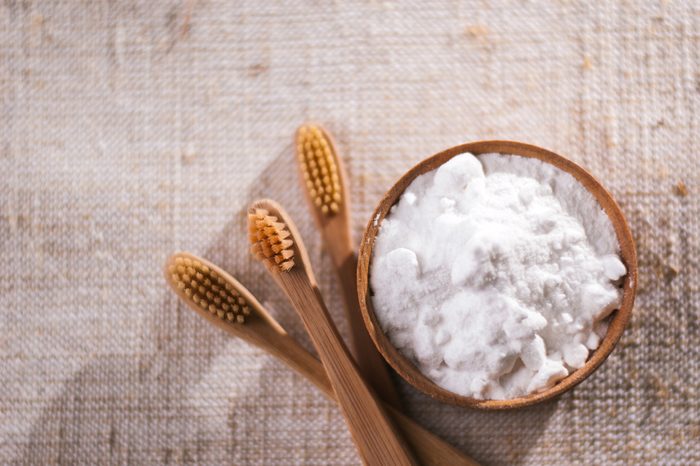
Baking Soda Mixed with Lavender Paste
This one is a great remedy for both adults and children. The baking soda relieves irritation and the lavender helps soothe the affected skin, explains St. Ours. “It also helps children release some of the emotional upset that comes with a bad bug bite or bee sting.” Just mix 2 tablespoons baking soda and 25 drops lavender essential oil in a clean dish. Then apply to the affected site. “Leave on for 20-30 minutes and remove with a cool, damp cloth,” instructs St. Ours. “If you notice lots of heat or swelling or an unusual rash appearing around the site, consult a medical professional.”
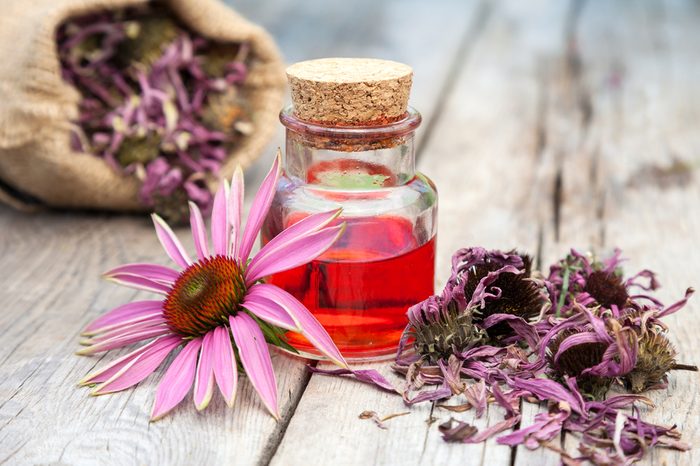
Echinacea
This homemade medicinal remedy has been a staple in people’s medicine cabinets for centuries—and for good reason. Echinacea is a liquid extract from the echinacea plant, which is part of the daisy family. It’s been used for everything from treating colds and soothing sore throats to stopping infections in their tracks. “If you notice that the area around your bite is becoming red, hard, and swollen, apply echinacea tincture to the entire affected area every hour until the swelling is gone,” says St. Ours. “Apply the tincture liberally by patting it into your skin with your fingertips. Use at least ¼ teaspoon per application. If the swelling does not decrease significantly after 24 hours of consistent use of this remedy, or if you start to run a fever, she recommends calling your doctor.
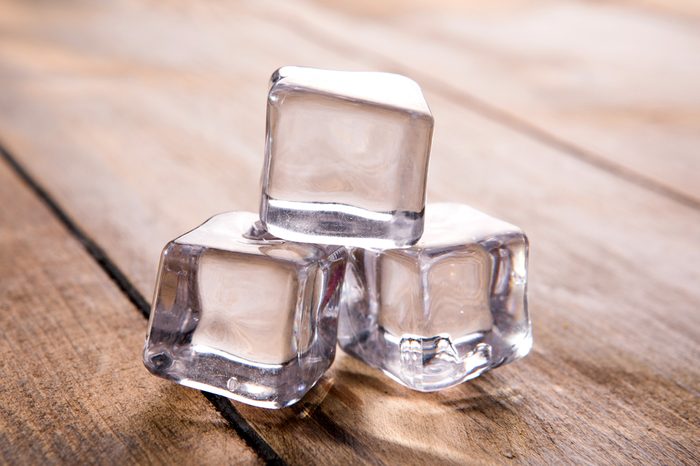
Ice Cubes
You probably remember mom or dad icing a burn. You can try ice for relief from itching, swelling, and overall discomfort. St. Ours explains that this simple remedy works for two reasons. “First, your sensory nerves can only communicate a certain amount of information to your brain at one time. So, when you apply the ice cube, the nerves that were telling your brain ‘this is itchy!’ start telling your brain ‘this is cold!'” she says. “Second, the coldness reduces local swelling and inflammation.” Only apply the ice for a few minutes at a time. Try these plants to ward off mosquitoes, too.

Plantain Leaves
Even though it shares the same name with the starchy fruit similar to a banana, the plantain that can help with bug bites is an entirely different plant, explains St. Ours. “It’s a common weed that grows well in packed soil. This means it’s often easy to find at playgrounds, hiking trails, and even growing alongside the sidewalk in cities!” she says. “You can recognize plantain species by the vertical veins that run along the leaves, which are organized like a circle of ‘rays’ emanating from a central point. This plant has impressive wound-healing abilities, which is why it’s an ingredient used in many healing salves and ointments. St. Ours recommends picking a few (clean) leaves of plantain. Either mash them with your fingers or chew them a bit until they’re soft before applying to the affected area.
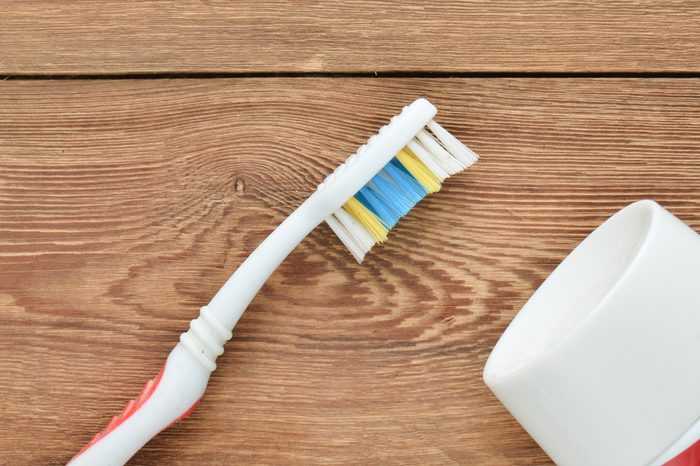
Toothpaste
To stop a mosquito bite from itching like crazy, simply apply a little toothpaste to it! “When a mosquito bites you, it releases an anticoagulant that lets them feed without being detected. But your body’s natural reaction to that anticoagulant is to create histamines and send them to the bitten area. This is why you itch and the bite mark swells,” explains Bernard Buttone, manager and associate certified entomologist at Triangle Pest Control. He recommends applying a minty toothpaste that contains menthol to the bite. You can benefit from its soothing and cooling properties. “Toothpaste is also naturally astringent, so it can prevent further swelling,” he adds. Find out the natural ways to ward off garden pests..

Vinegar
You may catch more flies with honey, but vinegar can also do the trick! “Vinegar can reduce stinging or burning sensations and is a natural disinfectant, especially if you’ve been scratching a bite,” says Buttone. He recommends soaking a washcloth or absorbent paper towel in cold water and vinegar. Apply it to the bite for a few minutes. “If you’ve been a mosquito feast and you have multiple bites, dilute 2 cups of vinegar in a lukewarm bath and soak for 15-20 minutes,” he adds.
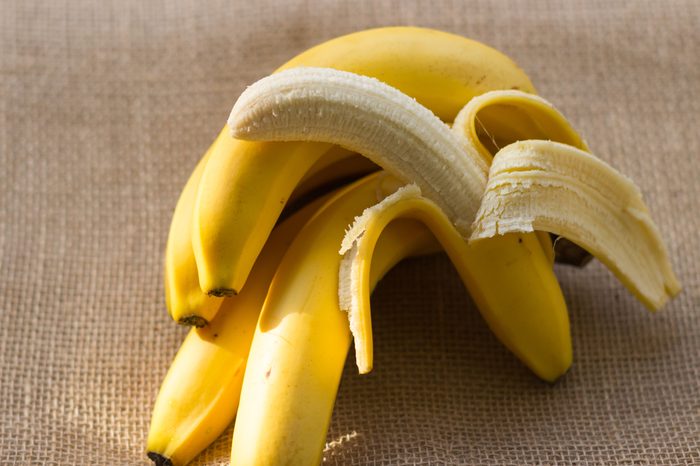
Banana Peel
“This ancient Chinese remedy involves rubbing the inside of a banana peel directly on the affected bite area,” says Amy Lawhorne, Vice President for the pest control company Mosquito Squad. “This is known to moisturize and neutralize the itching. The sugars in the banana will assist in soothing the redness.” Simply apply the inside of the peel onto the affected area and leave on for several minutes. Learn how to tell the difference between bees and flies..
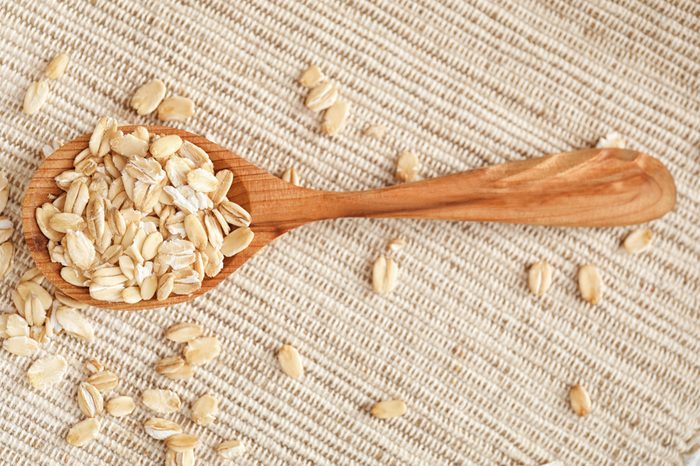
Oatmeal
You probably have this ingredient somewhere in your pantry, but may never have thought to use it on your skin. As it turns out, oatmeal provides healing, moisturizing, and antioxidant properties for the skin. “Oatmeal can relieve itching and reduce swelling, which is exactly when you need after getting bit or stung by something,” says Lawhorne. “Simply mix oatmeal with water to create a paste. Apply directly to the bite,” she says. “Let it sit for 10-15 minutes and then wipe off.”
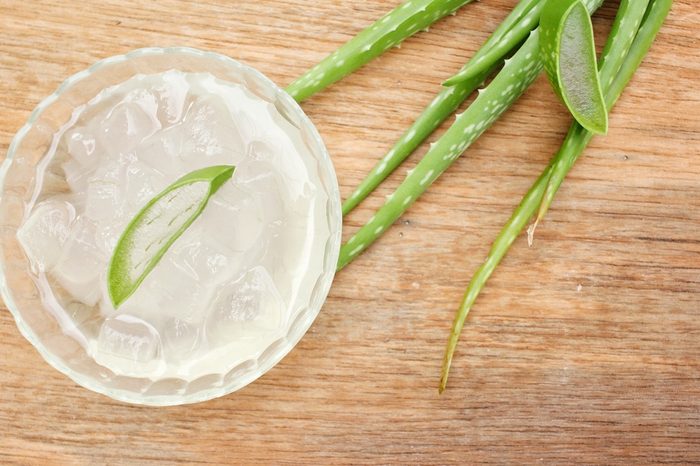
Aloe Vera
This plant is well-known for soothing sunburns, but few people realize that it can also ease the sting and itch of bug bites. “When most insects bite or sting, the body produces a histamine reaction to the area,” says Maureen Roland, RN, clinical education specialist and outreach coordinator at Banner Poison and Drug Information Center. “Aloe vera gel (mucilage), which can be obtained from the inner portion of the leaf and applied directly to the bite or sting site, has antibacterial properties. It also has an anti-inflammatory effect due to the natural salicylates and inhibition of histamine formation.” Learn how to grow aloe vera.
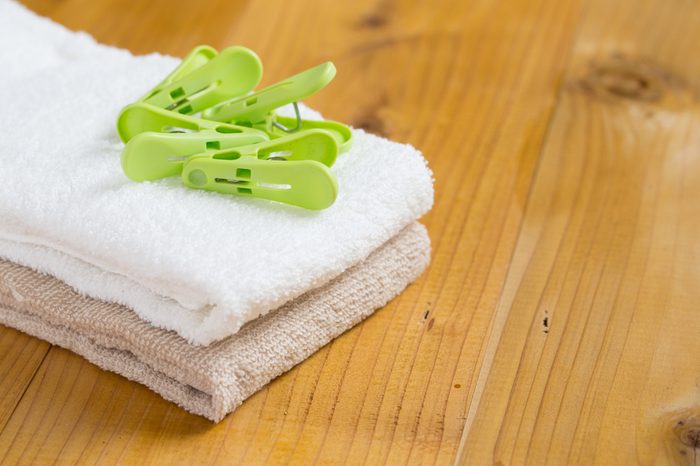
Cool Compress
To help reduce swelling and inflammation, apply a cool compress to the infected area as soon as possible. The coldness, Roland explains, causes the blood vessels in the area to constrict. This will also produce some numbness that can ease the pain. “Wet a cloth, put it in a resealable plastic bag, then place in the freezer for about 15 minutes,” she describes. “Apply the cool compress to the area for 15-20 minutes on and 15-20 minutes off. Repeat as needed over the first 24 hours.” A warm compress can also be beneficial to help reduce inflammation and fluid buildup to the bite or sting area. Next, find out the beneficial bees you want in your garden.